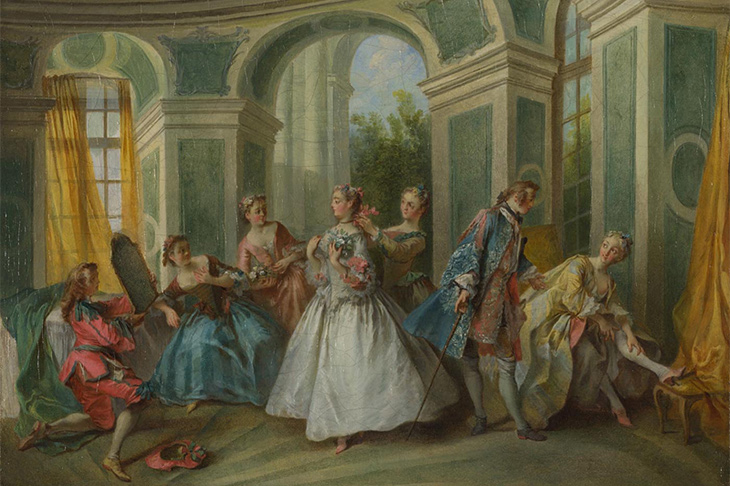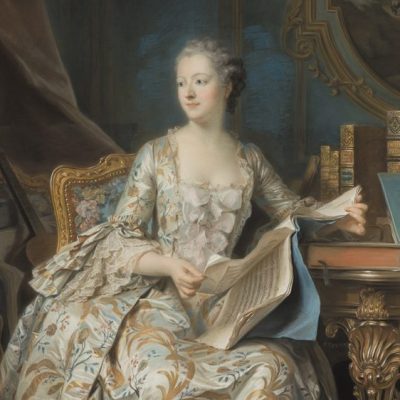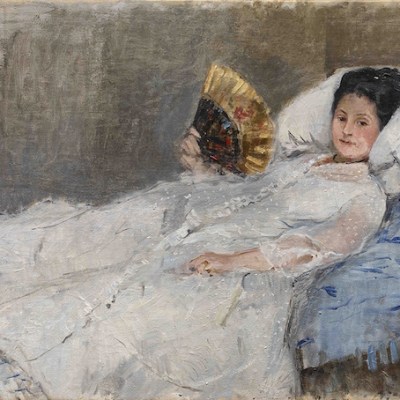At 624 pages, this richly illustrated volume is the culmination of years of labour by Humphrey Wine, the retired curator of 17th- and 18th-century French paintings at the National Gallery, London, and several younger scholars to whom he assigned artist biographies and selected entries. Like all museum catalogues, it is inherently constrained by the limits of the holdings it describes, but considered within these parameters – as the authoritative account of a national collection – it is well worth consulting.
 The gallery’s often unparalleled holdings constitute a road map to the development of British institutional taste. On this basis, however, it becomes clear that enriching the 18th-century French galleries has never been a priority. Its first acquisition in the field arrived no less than 73 years after it opened. And the manner in which the collection was enlarged – through gifts, bequests, and sporadic acquisitions, sometimes made within the confines of the Acceptance in Lieu scheme – significantly limits the paintings presented for consideration. It is also true that the National Gallery was deterred by the quality and breadth of the nearby Wallace Collection. But, as Wine explains, even Vigée Le Brun’s exquisite Alexandrine-Emilie Brongniart was loaned for long stretches of time to provincial museums by disdainful trustees who in 1991 hesitated to authorise its cleaning and restoration.
The gallery’s often unparalleled holdings constitute a road map to the development of British institutional taste. On this basis, however, it becomes clear that enriching the 18th-century French galleries has never been a priority. Its first acquisition in the field arrived no less than 73 years after it opened. And the manner in which the collection was enlarged – through gifts, bequests, and sporadic acquisitions, sometimes made within the confines of the Acceptance in Lieu scheme – significantly limits the paintings presented for consideration. It is also true that the National Gallery was deterred by the quality and breadth of the nearby Wallace Collection. But, as Wine explains, even Vigée Le Brun’s exquisite Alexandrine-Emilie Brongniart was loaned for long stretches of time to provincial museums by disdainful trustees who in 1991 hesitated to authorise its cleaning and restoration.
Mademoiselle Brongniart (1788), Elisabeth Louise Vigée Le Brun. National Gallery, London.
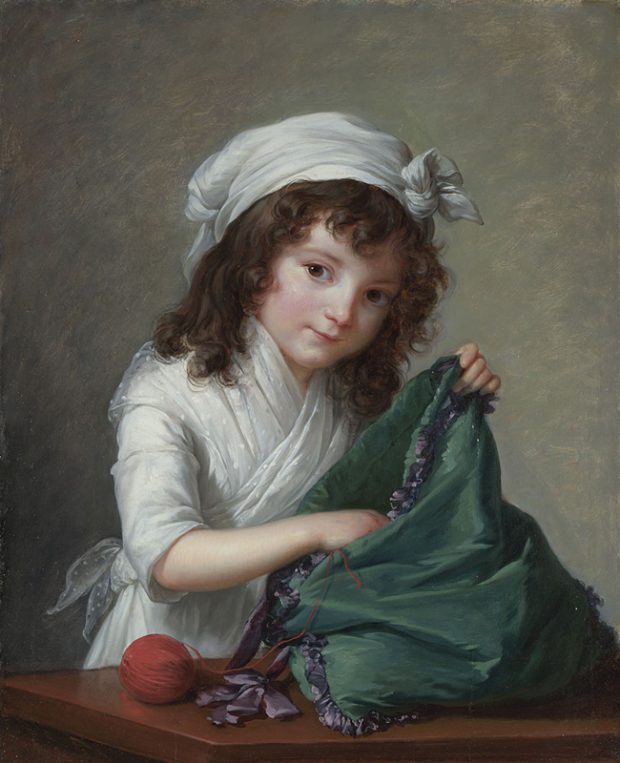
The result is a motley assortment of 72 works in oil and pastel. A handful of treasures – Drouais’s Madame de Pompadour, David’s Jacobus Blauw, Lancret’s Four Ages of Man, Nattier’s Manon Balletti, Perronneau’s Jacques Cazotte – set a high standard. These are joined by paintings of great art-historical interest such as Fragonard’s precocious student piece Psyche Showing her Sisters her Gifts from Cupid, a purchase by Michael Levey, who greatly expanded the collection in this area during his directorship. On the other hand, there are studio copies such as Les Deux Confidentes, after Boucher’s Love Letter (National Gallery of Art, Washington, D.C.); a miniature supposedly of Prince Charles Edward Stuart that may or may not be French; and seemingly the occasional 19th-century pastiche: Still Life with Bottle, Glass and Loaf, for instance, here ascribed to an ‘imitator of Chardin’.
Wine might have elected to minimise the more problematic works and focus upon the undisputed cream, especially as the latter group encompasses acquisitions made under his tenure, notably Danloux’s Baron de Besenval in his Salon, a painting that has alerted the art world to that artist’s impressive talents. But he takes the braver, more scholarly tack of championing the collection while confronting its lacunae in an introductory essay devoted to English taste (or lack thereof) in this area.
The Baron de Besenval in his Salon de Compagnie (1791), Henri-Pierre Danloux. National Gallery, London.
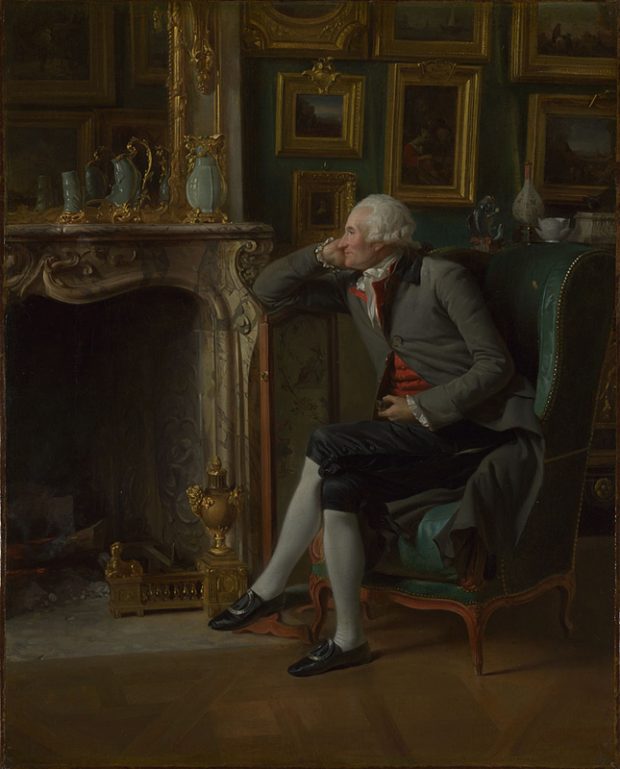
The entries that follow comprise full critical apparatus and useful technical notes. There are relatively few attributions and propositions that elicit full-fledged disagreement, although one notes a tendency to err on the side of generosity. A few remarks in this regard. Is there enough of a resemblance between the Portrait of a Man, given here to the artist Joseph Ducreux, and his striking Discret of about 1791 (Spencer Museum of Art, University of Kansas) to support the attribution proposed here on this very basis?
Portrait of a Lady (Madame de Gléon?) and A Girl Holding a Lamb are so compromised – seriously discoloured and abraded – that it is difficult to judge the authenticity of their attributions to Greuze. If we accept that the former, an awkwardly posed, anatomically false representation of a woman at a window, is indeed by Greuze on the basis of admittedly characteristic brushwork in the drapery, it must surely have been made well before the proposed date of 1760 – by which point he was making some of his finest portraiture. One is cautious about giving the benefit of the doubt because A Girl with Right Arm Raised, one of the museum’s two best paintings by the same artist, is here placed in direct comparison with a work of more questionable attribution from Dijon.
Maternal Affection (1773), Louis Jean François Lagrenée. National Gallery, London

Maternal Affection, a bequest made by the critic Brian Sewell, is the most recent addition to the collection. Joseph Assémat-Tessandier’s suggestion – that it is one of two paintings Louis Jean François Lagrenée made for the Earl of Shelburne, exhibited at the Salon of 1775 as La Candeur and La Douceur, and hitherto believed lost – is rejected but should perhaps be retained. After all, the entry, with its technical study of the signature line, now proves that the painting is dated 1775 and not 1773 as has sometimes been thought. Moreover, the abbé Morellet’s letters to Shelburne indicate that either La Candeur or La Douceur (perhaps both) included depictions of children. In the wake of the Salon, Morellet observed that Lagrenée made changes to his paintings for Shelburne. The artist was probably responding to a general consensus that his female heads were too large for their bodies. And, as Assémat-Tessandier points out, the newly published infrared reflectogram of Maternal Affection reveals a number of artist changes, including a reduction in the size of the head of the central seated woman.
Rich in new data, these entries will undoubtedly nourish discoveries for some time to come. Indeed the very abundance of information on offer occasionally leaves the reader swimming in pools of superfluous detail. Was it necessary to present a table illustrating calculations of the dimensions of Chardin’s water cistern? Why in the entry devoted to a replica of Vigée Le Brun’s Self Portrait in a Straw Hat is there so lengthy a discussion of the contemporary reception of the prime version on panel – instead of a more factual analysis of the status of the painting in question, which Herbert Horne described to Roger Fry in a letter of 1902 as a ‘wretched version’ and a ‘tea-tray’? More rigorous editorial oversight might have improved the catalogue in this regard and also avoided a number of relatively minor mistakes. Nonetheless these quibbles pale against the unmistakable value of this compendium and the curatorial passion that drives it.
The Eighteenth Century French Paintings by Humphrey Wine is published by the National Gallery Company.
From the March 2019 issue of Apollo. Preview the current issue and subscribe here.
